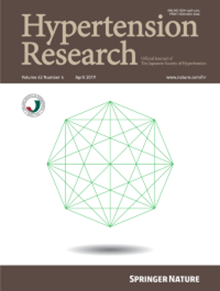孕期家庭血压的季节性变化与妊娠高血压疾病的发生频率:一项利用信息技术对孕妇进行家庭血压测量的多中心前瞻性研究。
IF 4.3
2区 医学
Q1 PERIPHERAL VASCULAR DISEASE
引用次数: 0
摘要
这项多中心前瞻性研究调查了孕期家庭血压(HBP)的季节性变化及其与妊娠高血压疾病(HDP)发生率的关系,并根据季节制定了特定孕期的 HBP 上限。六所大学医院和三家产科诊所招募了单胎妊娠的低风险妇女。每天用血压计测量两次 HBP,并使用移动应用程序在线记录。HBP根据季节(冬、春、夏、秋)和孕龄进行评估。在招募的 705 名妇女中,最终纳入了 603 人。在整个孕期,夏季舒张压平均值最低,冬季最高(夏季和冬季的平均值相差 3.5-4.6 mmHg)。收缩压的平均值也是夏季最低,冬季最高,但妊娠后三个月的早期除外(夏季和最高值季节之间的平均差为 2.5-3.4 mmHg)。有 32 名妇女(5.3%)被诊断为 HDP。与夏季相比,在春季和秋季分娩的产妇发生 HDP 的风险明显高于在冬季分娩的产妇。在夏季,妊娠头三个月 HBP 的整数上限为 120/80mmHg,妊娠后三个月为 120/75mmHg,妊娠后三个月为 125/80mmHg;在其他季节,妊娠头三个月 HBP 的整数上限分别为 125/85mmHg、125/80mmHg 和 130/85mmHg。在整个孕期,夏季的收缩压和舒张压最低。在解释妊娠期 HBP 和 HDP 风险时应考虑季节变化。本文章由计算机程序翻译,如有差异,请以英文原文为准。

Seasonal variation in home blood pressure during pregnancy and frequency of hypertensive disorders of pregnancy: a multicenter prospective study of home blood pressure measurements in pregnant women using information technology
This multicenter prospective study investigated seasonal variation in home blood pressure (HBP) during pregnancy and its association with the frequency of hypertensive disorders of pregnancy (HDP) and developed trimester-specific upper limits of HBP according to season. Low-risk women with singleton pregnancies were recruited at six university hospitals and three maternity clinics. HBP was measured by a sphygmomanometer twice daily and recorded online using a mobile application. HBP was evaluated according to season (winter, spring, summer, and autumn) and gestational age. Of 705 women recruited, 603 were finally included. Mean diastolic HBP values were lowest in summer and highest in winter throughout pregnancy (mean difference between summer and winter, 3.5–4.6 mmHg). Mean systolic HBP values were also lowest in summer and highest in winter except during the early period of the second trimester (mean difference between summer and the season with the highest value, 2.5–3.4 mmHg). HDP was diagnosed in 32 women (5.3%). The risk of HDP was significantly higher in women who delivered in spring and autumn but not in winter compared with summer. The rounded upper limit of HBP was 120/80 mmHg in the first trimester, 120/75 mmHg in the second trimester, and 125/80 mmHg in the third trimester for summer and 125/85 mmHg, 125/80 mmHg, and 130/85 mmHg, respectively, for other seasons. Systolic and diastolic HBP were lowest in summer throughout pregnancy. Seasonal variation should be considered when interpreting HBP and the risk of HDP during pregnancy.
求助全文
通过发布文献求助,成功后即可免费获取论文全文。
去求助
来源期刊

Hypertension Research
医学-外周血管病
CiteScore
7.40
自引率
16.70%
发文量
249
审稿时长
3-8 weeks
期刊介绍:
Hypertension Research is the official publication of the Japanese Society of Hypertension. The journal publishes papers reporting original clinical and experimental research that contribute to the advancement of knowledge in the field of hypertension and related cardiovascular diseases. The journal publishes Review Articles, Articles, Correspondence and Comments.
 求助内容:
求助内容: 应助结果提醒方式:
应助结果提醒方式:


